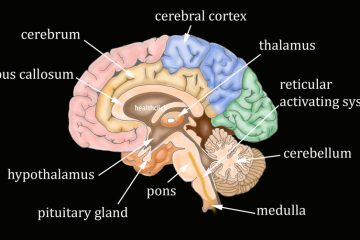One of the concepts that we can look at in this geriatric lower extremity strength and balance therapy course is that when we are younger, we have all the energy and all the vitality and vigor to do all the activities that we want to do, and we don’t necessarily have to think about doing our activities of daily living and not doing other activities. As we get older, the ability to balance the fun and the functional activities maybe a little bit more difficult as individuals lose vitality.
Aging is not a pathology, but physical and occupational therapists need to consider all the different things that can occur with aging and the older adult. Aging in and of itself should not lead to functional limitations or disabilities. However, certainly, we see some decreased strength and endurance when we look at aging models.
This activity that is presented in the Geriatric lower extremity strength and balance therapy course on balance, can be utilized as a test or as an exercise activity to improve strength, balance, and endurance.
So this test is the 30-second Chair Stand timed. This is part of the Rikli Senior Fitness Test, but it’s also part of the STEADI test, one of the three tests for balance. In this test, you are going to go ahead and put your hands across your chest. To do this, you are not going to be using your arms to go from sit to stand. Generally, when I am doing this test, I would be right next to the patient to ensure that they don’t have a fall or don’t lose their balance, but I’m going to stand back so that you can fully see her performance today. When I tell you to start, you are going to stand up all the way and then sit back down. You don’t have to come all the way back to the back of the chair, but you need to sit back down onto the chair. I want you to do that as many times as you can in the 30 seconds, and I’ll tell you when to start, and I will tell you when to stop. Ready and go. And stop.
She could do 12 within that 30-second time frame, which is within normal limits for her age. Male and females break out these norms, so it’s probably better to have a chart. I usually keep a lot of the charts for some of these tests that have multiple norms on a clipboard, so that I can very quickly look at them to see if the individual is within normal limits for their age. This test can be done with or without shoes, either way, but you want to document whether you did it with shoes or without shoes so that when you retest, later on, you can retest in the same situation. If the patient cannot do this without using their arms, I am going to wait 30 seconds, and then I’m going to say that they did zero. That way, I have a natural measure for this test. This test is a good measure of overall lower extremity strength, and individuals should be able to get from sitting to standing without using their hands. If the individual cannot do this, then I am going to look specifically to see where the weakness is.
Is it hip extensors?
Is it in the quads?
Is it in the ankle?
Where exactly is it, so that I can work on the specific issues? But this can also be something I give to somebody to do as part of their home exercise program, maybe having some pillows on the chair so that they’re working in a shortened range.
Learn more about Geriatric lower extremity strength and balance therapy

The video in this blog is referenced from the concussion rehab continuing education course, Balance and Falls in the Elderly Population. This online course is included in our all-access annual, annual renewal subscription. The online course, Balance, and Falls in the Elderly Population can also be purchased for $175 without an annual subscription. This course presents evidence-based research and clinically proven techniques to maximize safe, functional movement with the aging population. This vestibular and balance rehab course is an essential resource for clinicians working with the older population with orthopedic, neurological, and cardiopulmonary diagnoses to understand the many factors that can lead to dysfunctional movement and increased fall risk.
Learn more about our All Access Annual Subscription

Additional courses, on the evaluation and treatment of the geriatric population, within the all-access annual renewal subscription
Evidence-based Outcome Tools for Treating balance Dysfunction
Progressive Vestibular Treatments for the Over 60 Population
References
Millor, N., Lecumberri, P., Gómez, M. et al. An evaluation of the 30-s chair stand test in older adults: frailty detection based on kinematic parameters from a single inertial unit. J NeuroEngineering Rehabil 10, 86 (2013). https://doi.org/10.1186/1743-0003-10-86
Narintip Roongbenjawan, Akkradate Siriphorn, Accuracy of modified 30-s chair-stand test for predicting falls in older adults, Annals of Physical and Rehabilitation Medicine, Volume 63, Issue 4, 2020,
Pages 309-315, ISSN 1877-0657, https://doi.org/10.1016/j.rehab.2019.08.003.

